Negotiations were begun by the Architectural Association Council in the early 1960’s to incorporate the A.A. into the state education system by discussing the idea of merging with Imperial College. Imperial broke off negotiations in February 1970 citing concerns at the nature and intentions of the AA school community. The decision to call off the negotiations left the Architectural Association stunned and many students at I.C. and the A.A. dissatisfied. The I.C. governors raised various issues in coming to their decision. On the actual fusion of the A.A. within a composite College of Science and Technology, Lord Penney wrote that the A.A. desired the fusion “only on their own terms’.
The AA Principal and the AA Council prepared for closure and the winding up of the school. Students and staff mobilised and a search committee for a new Chairman was established, resulting in the election in 1971 of Alvin Boyarsky. Ultimately he transformed the AA into a major international cultural institution.
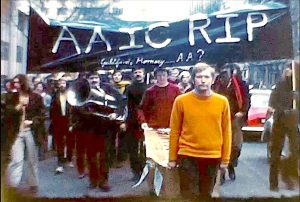 As part of all of this, on 10 February 1970 Imperial College Union (along with AA students) organised a Moratorium as a protest at the break-down of the talks. The Union cited this as being the first public demonstration at Imperial College. Of course this didn’t go without STOIC noticing and a film camera crew were there to capture events. By chance, on the 17 February the very first news programme called IC Newsreel was recorded; it was shown the following day in the Junior Common Room. One of the organisers John Goodman came into the TV Studio to discuss what had happened and to introduce the film that STOIC had shot. This and the next IC Newsreel are the only two programmes to survive from those early years. But the actual 8mm film also survives after 50 years. What was different was that the film was in colour and the programme was in black and white. I have therefore taken the videotape sound track and re-synced with the HD version of the 8mm film.
As part of all of this, on 10 February 1970 Imperial College Union (along with AA students) organised a Moratorium as a protest at the break-down of the talks. The Union cited this as being the first public demonstration at Imperial College. Of course this didn’t go without STOIC noticing and a film camera crew were there to capture events. By chance, on the 17 February the very first news programme called IC Newsreel was recorded; it was shown the following day in the Junior Common Room. One of the organisers John Goodman came into the TV Studio to discuss what had happened and to introduce the film that STOIC had shot. This and the next IC Newsreel are the only two programmes to survive from those early years. But the actual 8mm film also survives after 50 years. What was different was that the film was in colour and the programme was in black and white. I have therefore taken the videotape sound track and re-synced with the HD version of the 8mm film.
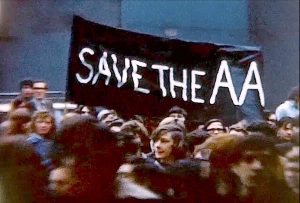 In re-syncing the film and audio I ran into a problem. Whatever I did, I couldn’t get the original sound and new film transfer to match. Eventually I re-watched the video and discovered that two very small sections are now missing from the 8mm film compared to what was used in the TV programme in 1970. Coming to my rescue was Andy Finney STOIC’s first chairman and producer of the programme. He was involved with the filming and told me that after the film was used in the programme it was later shown at a students union meeting. I therefore can only assume that either these sections were removed, or more likely they were damaged when being shown at the meeting and then removed. So I’ve cheated and replaced the missing sections with the 50 year old, but very poor quality, videotape. (See update below)
In re-syncing the film and audio I ran into a problem. Whatever I did, I couldn’t get the original sound and new film transfer to match. Eventually I re-watched the video and discovered that two very small sections are now missing from the 8mm film compared to what was used in the TV programme in 1970. Coming to my rescue was Andy Finney STOIC’s first chairman and producer of the programme. He was involved with the filming and told me that after the film was used in the programme it was later shown at a students union meeting. I therefore can only assume that either these sections were removed, or more likely they were damaged when being shown at the meeting and then removed. So I’ve cheated and replaced the missing sections with the 50 year old, but very poor quality, videotape. (See update below)
For the keen eyed you will see some blue hoarding when the group is in Imperial Institute Road (now Imperial College Road) and this was the start of the demolition of the old Chemistry Building. Also some staff are seem in white lab coats on the steps of the old Chemistry Building just before the blue hoarding shot.
Here then is the re-synced film in colour from 50 years ago. Oh, and also spot a miss spelling on banners.
UPDATE AUGUST 2022:
In digitising a 1971 student project film (more about that at a later point) I have found the missing footage mentioned earlier. It’s the film (in colour) that you will see inserted from the original videotape, but in black and white.
Colin Grimshaw March 2021
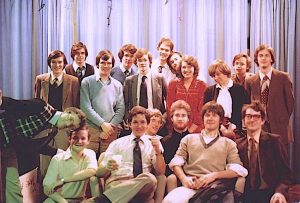
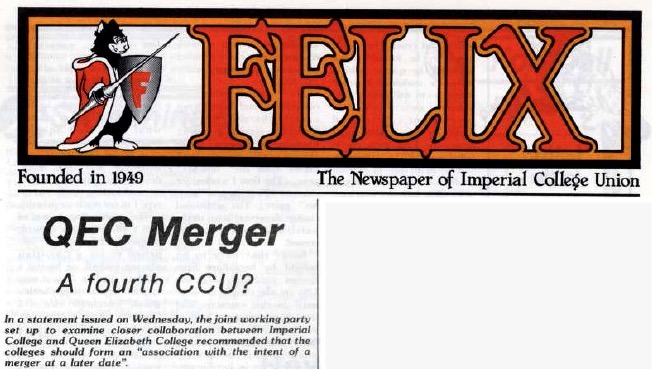
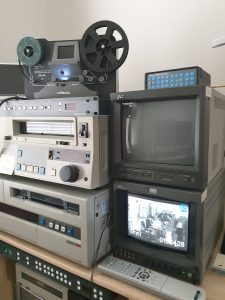
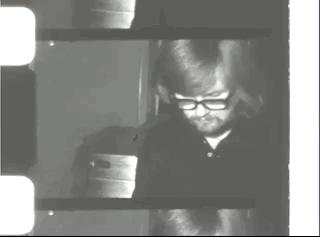
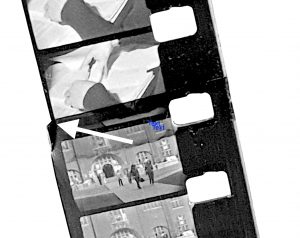
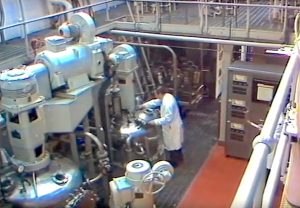 In the
In the